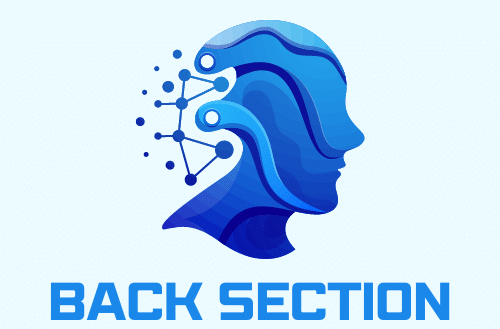Machine learning (ML) has become a staple of the modern business world, and the TensorFlow Extended (TFX) platform has made it more accessible than ever. In its essence, TFX is a Google-developed, end-to-end platform for deploying production-ready machine learning models. It provides a set of flexible and scalable components that allows you to create, test, and deploy ML models with less effort and expertise. This article will guide you through how you can use TensorFlow Extended for building end-to-end machine learning pipelines. We’ll delve into the TFX model, the benefits of using TFX in the cloud, and the key components that make up a TFX pipeline.
Understanding the TensorFlow Extended (TFX) model
The TFX model is the framework upon which TensorFlow operates. It’s a production-ready solution that simplifies the process of implementing ML models. It’s designed to handle a wide range of tasks, including data validation, transformation, model training, and serving.
A lire en complément : How do you set up a secure CI/CD pipeline for a .NET Core application using Azure Pipelines?
The main advantage of the TFX model is its ability to streamline the creation of machine learning pipelines. A pipeline represents the workflow of a machine learning process, from the initial data collection to the final model deployment.
In the TFX model, each stage of the ML pipeline is handled by a specific component. These components are modular and can be reused across different pipelines. This feature brings a lot of flexibility and reduces the amount of coding required, which ends up saving your time.
Lire également : What methods can be used to optimize the cold start time of serverless functions?
Get the Best of TFX with Cloud
To fully leverage the capabilities of TFX, it’s advisable to run it in the cloud. When you use TFX in the cloud, you gain access to highly scalable resources that can handle large datasets and complex machine learning tasks.
Moreover, running TFX on a cloud platform like Google Cloud or Kubeflow has other benefits, too. For instance, cloud platforms provide robust data storage and computing infrastructure, ensuring that your machine learning pipelines run smoothly without any hiccups.
The cloud also offers advanced monitoring and logging tools, enabling you to keep track of your ML pipelines and troubleshoot any issues swiftly. In essence, using TFX in the cloud gives you more control over your ML workflows and significantly enhances their efficiency.
Exploring the Components of a TFX Pipeline
A TFX pipeline consists of several components, each designed to perform a specific task in the machine learning workflow. Let’s take a closer look at some of the key components that you’ll employ while building a TFX pipeline.
ExampleGen
The first component in a TFX pipeline is ExampleGen. Its primary function is to ingest and preprocess the input data. It can take data from various sources, such as a local file system or a cloud-based storage. ExampleGen splits the data into two subsets: training data and evaluation data. The training data is used to train the ML model, and the evaluation data is used to assess the model’s performance.
SchemaGen and StatisticsGen
Once the data is ingested, it’s passed on to the StatisticsGen and SchemaGen components. StatisticsGen computes descriptive statistics of the dataset, providing useful insights into the data. On the other hand, SchemaGen generates a schema based on the data. The schema represents the expected format of the data and is used to validate future data inputs.
Transform
The Transform component performs feature engineering on the dataset. It applies a series of transformations to the data to make it more suitable for machine learning. For instance, it can normalize numerical data or convert categorical data into numerical format.
Trainer
The Trainer component is where the actual training of the machine learning model takes place. It uses the preprocessed data from the Transform component and a user-defined TensorFlow model to train the ML model.
Evaluator and Pusher
After the model is trained, the Evaluator component assesses the model’s performance using the evaluation data. If the model meets the specified performance criteria, the Pusher component deploys the model to a serving infrastructure.
In conclusion, TFX is a comprehensive, flexible, and scalable platform for creating end-to-end machine learning pipelines. It provides a robust framework and a set of powerful components that enable you to implement ML models with increased efficiency. Whether you’re running TFX in the cloud or on-premises, it offers significant benefits that can help streamline your machine learning workflows.
Enhancing Machine Learning Pipelines With TFX Components
While some machine learning applications can be managed using standard tools and platforms, more complex projects often require a more robust and scalable solution. That’s where TFX components come into play. TFX components are flexible, modular elements that can be easily incorporated into a machine learning pipeline to enhance its capabilities.
One of the most important TFX components is the ExampleGen, which is responsible for ingesting and preprocessing input data. This component can extract data from a variety of sources, including cloud-based storage and local file systems. The data is then split into training and evaluation subsets, which are used for model training and performance assessment, respectively.
Following the ExampleGen, the data is passed to the StatisticsGen and SchemaGen components. The StatisticsGen outputs descriptive statistics of the dataset, giving you an initial overview of the data at hand. Simultaneously, the SchemaGen generates a schema based on the data, ensuring future data inputs align with the expected format.
To prepare the data for machine learning, the Transform component performs feature engineering. This process includes various transformations, such as normalizing numerical data and converting categorical data into numerical format. It’s an essential step in making the data suitable for training the machine learning model.
The Trainer component uses the preprocessed data and a user-defined TensorFlow model to train the machine learning model. Following the training process, the Evaluator assesses the model’s performance using the evaluation dataset. If the model meets the predefined performance criteria, the Pusher deploys the model to a serving infrastructure.
Machine learning is a rapidly evolving field, and the emergence of advanced platforms like TensorFlow Extended (TFX) is a testament to this growth. By offering an end-to-end solution for creating machine learning pipelines, TFX is becoming an indispensable tool for data scientists and machine learning engineers worldwide.
From the moment data is ingested by ExampleGen to the final model deployment by Pusher, every step of the machine learning workflow can be managed using TFX components. Additionally, TFX simplifies the process of implementing complex ML models by providing a cohesive and flexible framework for data validation, transformation, and model training.
One of the key advantages of TFX is its compatibility with cloud-based platforms like Google Cloud. Running TFX on the cloud allows you to leverage scalable resources for handling large datasets and complex tasks. Furthermore, cloud platforms offer robust data storage, advanced monitoring tools, and a high-performance computing infrastructure, making them an ideal environment for running TFX pipelines.
In conclusion, TensorFlow Extended (TFX) is revolutionizing the way we approach machine learning. By offering a scalable, flexible, and comprehensive solution for building end-to-end ML pipelines, TFX is poised to be a game-changer in the world of machine learning. Whether you’re running TFX on Google Cloud or leveraging its powerful components in your local environment, TFX can help streamline your machine learning workflows and boost your productivity.






